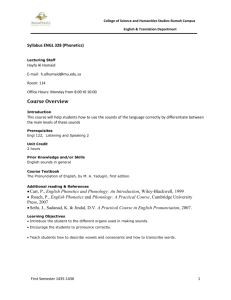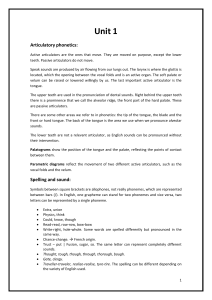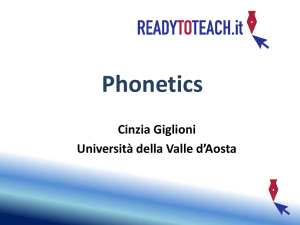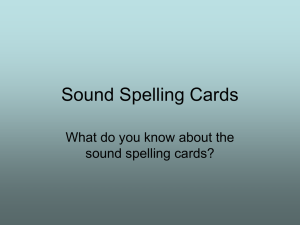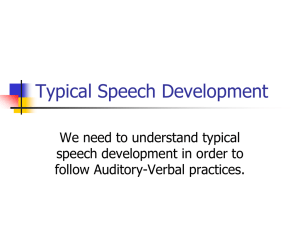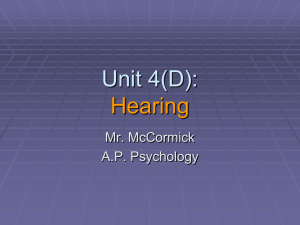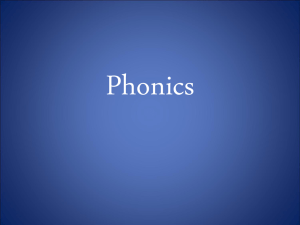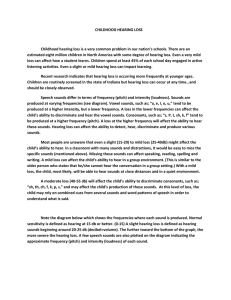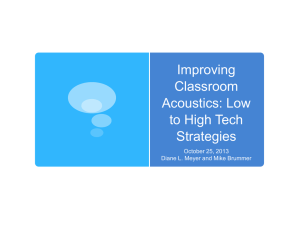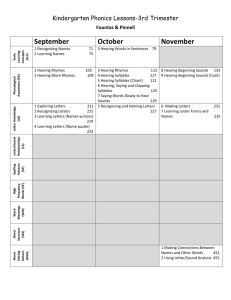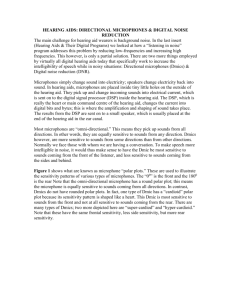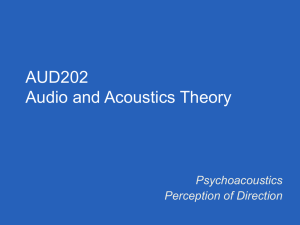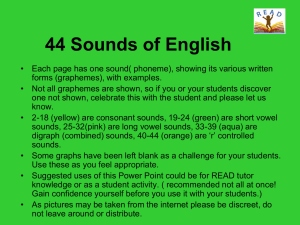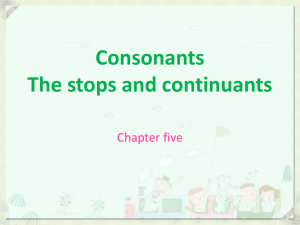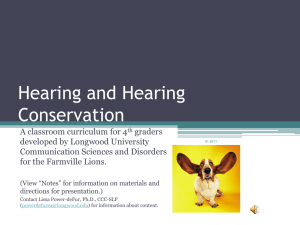Awareness of Hearing Impairments
advertisement
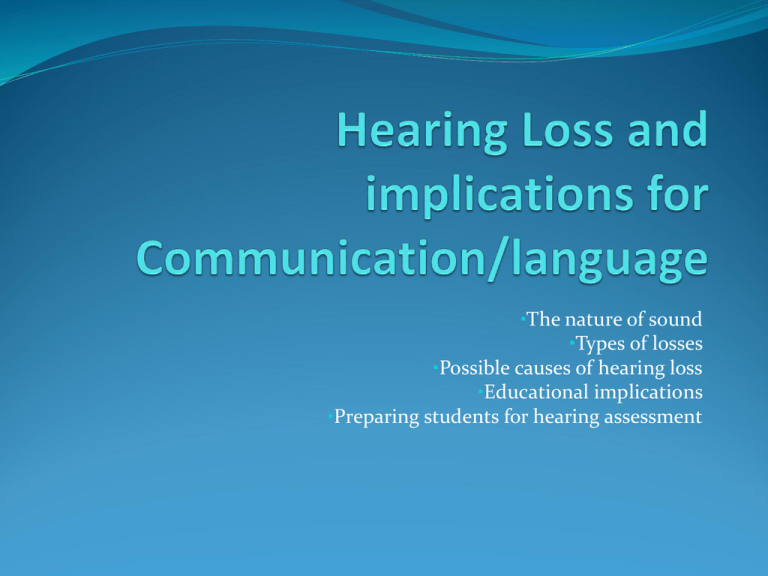
•The nature of sound •Types of losses •Possible causes of hearing loss •Educational implications •Preparing students for hearing assessment The nature of sound A wave phenomenon with two dimensions 1. Frequency (Hz) - Hertz (cycles per second) - the number of vibrations of air particles per second: measured in Hertz - the human ear has a frequency range of approximately 20-20,000 - typically hearing is tested from 250-8000 Hz Hz Low and high frequencies – impact on speech discrimination: Psychological attribute which corresponds to frequency is pitch Low frequency is perceived as low pitch and high frequency as high pitched sounds Middle C on a piano is 250Hz, one octave below is 125 Hz High pitched sounds include: a soprano voice, a doorbell In general, vowel sounds are low-pitched and consonant sounds are high frequency sounds 2. The other dimension is intensity, measured in decibels (dB) “loudness” Usable hearing is from 0-120 dB dBs are intensity ratios 20dB is not double of 10dB, but 100 times greater The strongest sounds an average person can hear without pain can be as much as 10 million times greater in intensity than a sound that is barely audible For example: - 20 dB a whisper at four feet - 50 dB - quiet auto ten feet away -60-70 dB - normal conversation at three feet - 90 dB - pneumatic drill at ten feet Speech acoustics Spectral characteristics make sound complex Vowels are lower frequency - generallly having their most intense frequency components below 750 Hz Consonants are composed of higher frequency sounds often consisting of a wide range of frequency components In addition, vowels and consonants also differ in the amount of acoustical energy they produce For an equivalent amount of vocal effort, the range between the loudest vowel (the o sound in the word dog) and the softest consonant (th sound) is 28 dB Vowels are therefore the most intense sounds heard in speech, while consonants are considerably less intense However, consonants carry the most information Consonants above 1000 Hz provide 60% of speech intelligibility, while vowels below 500 Hz provide only 5% of speech intelligibility <Illustration> Thus, shouting at an individual with a sensorineural hearing loss will do little to improve comprehension because the vowels will be the louder and the consonants will continue to be less audible For this reason even mild hearing losses of 30-60 dB can have a big impact on speech intelligibility Types of loss Conductive Sensorineural impairments Mixed impairments Central auditory impairment Follow up to formal assessment Interpreting audiograms - this is the role of the audiologist The job of the educational team is to get as much information from the audiologist and the speech therapist about the nature of the speech sounds that the student can hear - with and without aids Educational Decisions related to communication strategies for students with hearing impairments and deafness Is Sign language the way to go? Consider the student’s ability to imitate gestures Consider the student’s memory Consider the student’s ability to recognize gestures Consider the student’s communication needs, community, and determine whether this is a match for the student and his/her family Will you use visual aids? Consider the student’s visual discrimination skills Consider the student’s receptive understanding of pictures Consider the student’s family and community Will you use a combination of gestures or signs and visual symbols? Imitation memory discrimination How far can the student go? Combined usage – what for what? Choosing a communication system – the issues American Sign Language (ASL) Oral language Cochlear implants Combination approaches Educational Implications Literacy: issues in teaching children who are deaf to read Same language community issues Teachers trained in working with children/youth with hearing impairments and deafness Social supports and friendship development Least restrictive environment Participation in the core curriculum with support for language and social engagement Interpreters, interveners, and support teachers Signing community – same-language community

